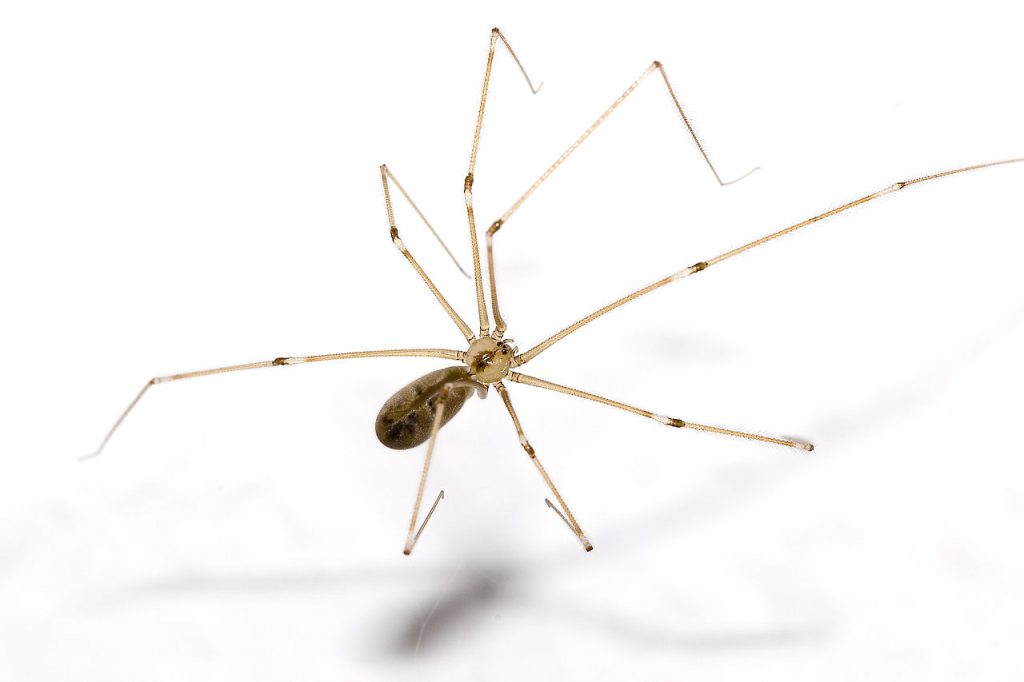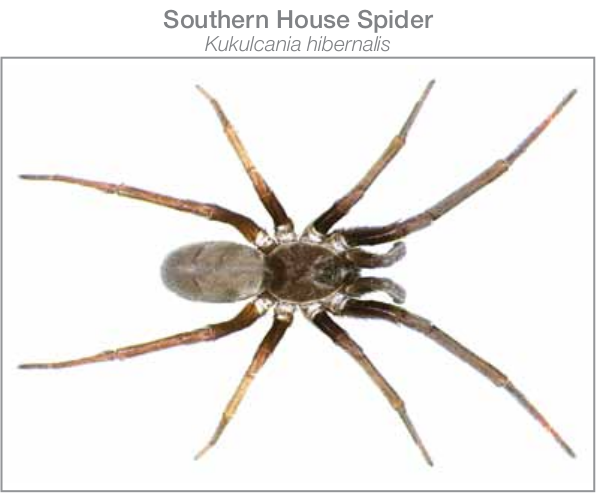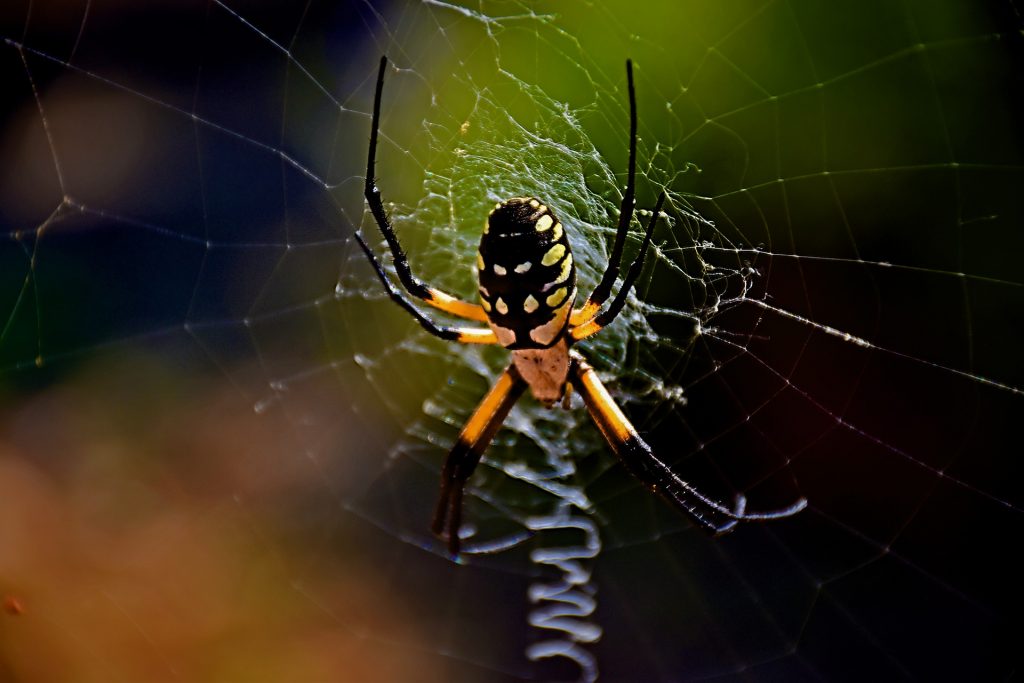
Common Spiders in Bryan/College Station, TX
The following are the common spiders in Bryan/College Station:
Cellar Spiders

The cellar spider is one of the most frequently encountered spiders in buildings. This species is often times referred to incorrectly as “daddy longlegs” by the public, as people confuse it with the garden daddy longlegs or harvestmen of Order Opiliones, which are not spiders.
These spiders have jaws that move side to side, similar to scissors. Cellar spiders are brown, beige and gray in color, generally pale and translucent. They have long, spindly legs banded at the joints.
The bite of a cellar spider is not painful, nor is the venom dangerous. However, they have large unsightly webs commonly found in basements, cellars and crawlspaces.
Ground Spiders

The Parson Spider and the Two-Striped Ground Spider are common ground spiders in the Bryan/College Station area. You can easily recognize the Parson spider by the characteristic white pattern on the black abdomen. The Two-Striped Ground Spider has paired longitudinal black stripe, which looks superficially like a small grass spider or wolf spider. These spiders are free-wandering and will actively hunt by chasing down and subduing prey with their silk.
The bite of ground spiders is similar to a pinprick or bee sting. However, the venom is typically not dangerous to humans. Occasionally, you can find some species indoors on floors and walls.
Jumping Spiders

Jumping Spiders are another common type of spider in the Bryan/College Station area. These include both the Zebra Jumper and the Daring Jumper. These spiders are active hunters, moving with short, quick hops. They stalk prey during the day on open surfaces. These spiders are active on exterior walls and window screens, as well as on tree trunks, logs and rocks.
Prior to mating, males perform courtship “dances” for females and often serve as a post-copulatory meal to hungry females.
The bite of a Jumper Spider is similar to a bee sting and the venom is generally not dangerous to humans.
Wolf Spiders

Wolf Spiders are common in much of the U.S. The rabid wolf spider has a yellowish-tan colored body with two thick dark brown lines running down the sides of the head and one dark brown strip down the center of the abdomen.
This type of spider hunts actively on the ground and rest beneath stones and debris. Females carry their round, white egg sacs protectively attached to their spinnerets.
Depending on the species, the bite is similar to a pinprick or bee sting. However, the venom is typically not dangerous to humans. Temporary numbness or secondary bacterial infections may occur.
Crevice Weavers

Crevice weavers are the most-encountered spider in and around human dwellings and barns. The most commonly encountered species of this group is the southern house spider. These spiders create prominent, coarsely hackled circular webs surrounding a central opening to the tubular retreat, within which they stay during the day. Males of this species can be mistaken for brown recules because of the similar coloration. However, the spiders of this species are much larger when compared to a brown recluse. Crevice weavers prefer to occupy the exterior walls of rustic outbuilding, barns and abandoned unkempt homes. They will also occupy undisturbed attics and basements.
While the large size of these spiders may be distressing to arachnophobes, the bite is considered not dangerous to humans. The bite is similar to that of a bee sting.
Tarantulas

The Texas Brown Tarantula is the common type of tarantula found in the BCS area during the fall season. Tarantulas live on the ground and in burrows. They hunt at dusk by sense of touch. This type of spider spins mats of silk and may line their burrows with silk. These spiders are long-lived and can survive cold weather by sheltering in protective areas. They are typically hairy and mostly black, brown and beige in color.
Occasionally tarantulas enter open structures and may be found under landscaping features. They defend themselves by “throwing” hairs from their abdomen, assuming a threatening posture, and, if still threatened will lunge and bite.
The bite of a tarantula can be painful, but the venom is not considered dangerous. However, secondary bacterial infections from bites are possible.
Garden Spiders

Garden Spiders are common during the fall season in BCS. They can be seen resting head-down in the center of their large orb-shaped webs. They generally create a dense, zigzag pattern of sticky silk near the center of their webs, which they construct at night between branches, tall woody-stemmed weeds and sometimes on buildings and other manmade structures. These spiders have an oval to shield-shaped abdomen with yellow, black and silver-white patterns, depending on the species.
The bite of a Garden Spider is similar to a bee sting. However, the venom is typically not dangerous. Females will deposit their eggs in large papery silk sacs, within the web in early autumn. Eggs overwinter and the young emerge in the spring.
These are just the common spiders in Bryan/College Station. City Pest Control offers spider pest control services. Contact us with the link below for more information or to schedule your spider pest control services today!

